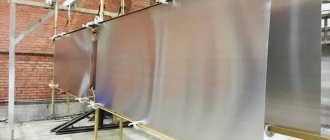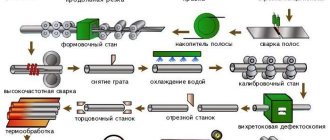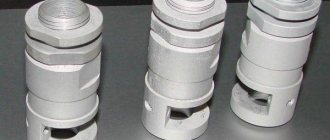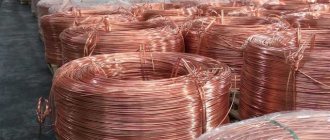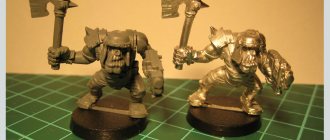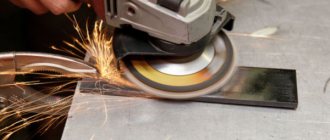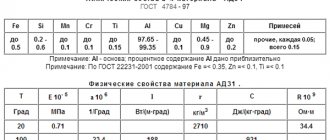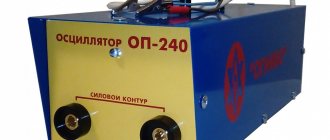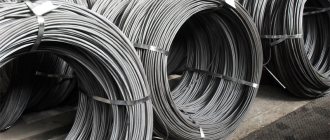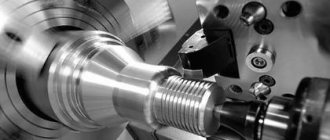MAIN TECHNICAL CHARACTERISTICS:
Line for anodizing and electropainting of profiles for architectural applications.
- Power consumption: 45.000 A
When using the appropriate suspension system, it is possible to both anodize and paint some of the aluminum parts. The line for anodizing and painting aluminum profiles is scaled in accordance with the Customer's request.
We provide installation of the following equipment:
- 3 pcs. anode baths at 15,000 Amperes.
- 1 electropainting bath 10,000 Amp.
Declared productivity 700 tons/month.
Production time 24 hours/day for 24 days/month.
Oxide film thickness 15 microns
Oxide film formation time 3 min/micron x 15 microns = 40 min
Number of anode baths 3
Number of downloads per hour 4.5
m2 per hour 450 m2
Aluminum weight 2.7 kg/m2
Annual output in m2 450 m2 x 6912 hours = 3,110,400 m2
Annual capacity in kg 3,110,400 m2 x 2.7 kg/m2 = 8,398,080 kg = 8,398 tons
WATER
Water for first filling: 30 – 35 m3/hour
GAS CLEANING
DESCRIPTION OF OPERATION OF THE GAS WASHING COLUMN
The inlet of the vapors to be treated occurs by suction from the collector, and is located in the lower part of the tower and then they are fed into the vertical channel, where they are immediately washed with a neutralizing solution by jets opposing the ramp. The purified gas then enters the liquid separation zone, which consists of a package of special profile blinds and is then sent to the outlet chimney. The neutralizing solution is contained in a large bath on the foundation, from which it circulates using a submersible centrifugal pump made of isostatic polypropylene, stabilized in ultraviolet rays, without a single metal part in contact with the pumped liquid through the spray supply line. For maintenance, inspection windows are provided for loading and unloading of the filling substance, a bottom valve and an overflow valve connected to the wastewater sent to the wastewater treatment plant.
Basic bath equipped with level controls for the following positions:
- Max. level: with a closed solenoid valve connected to the hydraulic system.
- avg. level: solenoid valve open.
- min. level: blocking the submersible pump to avoid running dry.
- solenoid valve for adding neutralizing solution.
All phases are controlled from the main electrical panel, mounted on the tower or near a pH meter (with a measuring probe). All these phases are monitored by a main control panel mounted on the tower (or close to it) and a pH meter (with measuring probes).
The treatment plant is designed for a minimum efficiency of 95%. In accordance with European emission standards.
- NaOH < 1 mg/ms
- H2SO4 < 1 mg/ms
GAS:
For anodizing line: 1.600.000 kcal/hour consumption: 70 m3/hour approximate value
COMPRESSED AIR
Consumption: 500 l/hour
pressure: 7-8 bar quality: dehydrated and oil free
INSTALLED ELECTRICAL POWER APPROX: 1880 kW
ELECTRICAL POWER USED APPROX: 1500 kW
LIGHT LEVEL:
Bath line: 250 LUX approx. Loading/unloading area: 200 LUX approx.
FLOOR LOAD:
Floor load: bath area: 3.5 tons/m2
Floor load: equipment area: 1.5 tons/m2
Floor load: loading/unloading area: 3.5 tons/m2
EQUIPMENT FOR PROFILE SUSPENSION:
- Aluminum wire
- Hexagon stands
- Double comb stand
- Stands with single comb
- Polypropylene pliers
- Polypropylene clamps
PERSONNEL REQUIRED FOR AUTOMATIC LINES
Shift calculation:
- 6 operators in loading area
- 4 operators in the unloading area
- 1 operator on the computer
- 1 operator for basket movements
- 1 chemical technologist
We actively use new opportunities
The products of the MiSSP plant have become even better. All aluminum parts of equipment that are assembled in factory workshops are subject to a mandatory anodizing procedure. To ensure maximum quality and service life of the plant's main products, it is especially important that blow molds also undergo an anodizing process. Customers have already appreciated the advantages of the appearance of MiSSP equipment, and the new level of reliability of components is confirmed by the results of specially performed studies.
The line installed at the factory has a total heater power of 33.5 kW, and its overall dimensions are 12x2.5x2.1 meters. All operations are performed in galvanic and rinsing baths made of plastic from the world's best manufacturers - ROCHLING and SIMONA. Equally important, in order to maximally comply with environmental protection requirements, the MiSSP plant purchased and installed a galvanic waste treatment line.
Having modern and high-performance galvanic equipment, the MiSSP plant offers enterprises and entrepreneurs in the region a new service - it accepts orders for anodizing. Fair, low prices and high quality of all work performed are guaranteed!
INSTALLATION DESCRIPTION
DEGREASING BATH + ETCHING BATH
- Bathtub made of rolled steel sheets of thickness. 3 mm
- External steel supports, plate 150×12
- Insulation with mineral wool, density 80 kg/m3, lined with steel sheet thickness. 1.2 mm with double acid-resistant painting
11 WASHING BATHS
- Bathtub made of rolled steel sheets of thickness. 3 mm
- External steel supports, 150×12 plate with double acid-resistant paint
NEUTRALIZATION BATH
- Bathtub made of rolled steel sheets of thickness. 3 mm
- External steel supports, 150×12 plate with double anti-acid paint
ANODIZING BATHS
- Bathtub made of rolled steel sheets of thickness. 3 mm
- External steel supports, 150×12 plate with double anti-acid paint
ELECTRIC PAINT BATH
- Bath made of rolled steel sheets 3 mm thick
- External steel supports, 150×12 plate with double anti-acid paint
BATH GILDING
- Stainless steel bath sheet AISI316, thickness 3 mm.
- External steel supports, plate 150×12
- Insulation with mineral wool, density 80 kg/m3, lined with steel sheet thickness. 1.2 mm with double anti-acid painting
COLD FIXING BATH
- Stainless steel bath sheet AISI316, thickness 3 mm.
- External steel supports, plate 150×12
- Insulation with mineral wool, density 80 kg/m3, lined with steel sheet thickness. 1.2 mm with double anti-acid painting
HOT FIXING BATH + HOT WASHING BATH
- Stainless steel bath sheet AISI316, thickness 3 mm.
- External steel supports, plate 150×12
- Insulation with mineral wool, density 80 kg/m3, lined with steel sheet thickness. 1.2 mm with double anti-acid painting
ACCESSORIES FOR 1st DEGREASING BATH AND PICKING BATH
- 1 stainless steel steam heating coil AISI 304, complete with brackets, automatic temperature control valve
- 1 bracket for temperature sensor
- 1 bath stirrer consisting of perforated stainless steel. pipes Ø 42.2, with supporting brackets and air inlet valve.
- 1 PVC pipe Ø 40 and fittings for water supply.
ACCESSORIES FOR 11 RINSE BATHS
- 1 bath stirrer, consisting of a Ø 40 perforated PVC pipe fixed to the bottom of the bath with corresponding brackets and an air inlet valve.
- 1 x PVC top pass-through damper
- 1 PVC outlet pipe Ø 90 for overflow
- 1 PVC relief valve Ø 50
- 1 PVC pipe Ø 40 and fittings for water inlet
- PVC cladding thick. 1.8 mm
ACCESSORIES FOR 1st NEUTRALIZATION BATH
- 1 PVC discharge pipe Ø 90 for overflow
- 1 relief valve UNI 2277 Ø 40 made of PVC
- 1 PVC pipe Ø 40 and fittings for water inlet
- PVC cladding thick. 1.8 mm
ACCESSORIES FOR 3 ANODIZING BATHS
- Double electrical fittings with aluminum rods on opposing inputs
- Rectangular extruded aluminum electrodes
- 1 bath stirrer consisting of 2 PVC pipes Ø 40
- 1 PVC coupling complete with liner, clamps, flange PN 10 Ø 4'' for acid inlet.
- 1 PVC coupling complete with liner, clamps, flange PN 10 Ø 4'' for acid outlet, complete with filters.
- 1 perforated PVC pipe Ø 110 complete with brackets for cooling sulfuric acid.
- 4 flanges PN 10 DN 100 made of PVC
- 2 valves for PN 10 DN 100 PVC bushings
- 1 PVC pipe Ø 40 water inlet
- 1 PVC pipe Ø 40 acid inlet
- 1 pneumatic cylinder containing:
- 2 electrical contacts with aluminum rods and water cooling.
- 1 5-way valve
- 2 valves to regulate air flow
- 1 solenoid valve for automatic control
Specifications:
Double effect cylinder:
- internal diameter: 200 + 200 mm.
- Force 12 atm: 7,000 kg.
- Compressed air: 10 atm.
- PVC cladding thick. 1.8 mm
ACCESSORIES FOR 1ST ELECTRIC PAINTING BATH
- Double electrical fittings with aluminum rods on opposing inputs
- Tubular cathodes made of stainless steel AISI304
- 1 bath stirrer consisting of 2 PVC pipes Ø 40
- 1 PVC coupling complete with liner, clamps, flange PN 10 Ø 4'' for acid inlet.
- 1 PVC coupling complete with liner, clamps, flange PN 10 Ø 4'' for acid outlet, complete with filters.
- 1 perforated PVC pipe Ø 110 complete with brackets for cooling sulfuric acid.
- 4 flanges PN 10 DN 100 made of PVC
- 2 valves for i PN 10 DN 100 PVC bushings
- 1 PVC pipe Ø 40 for water inlet
- 1 PVC pipe Ø 40 for acid inlet
- 1 pneumatic cylinder containing:
- 2 electrical contacts with aluminum rods and water cooling.
- 1 5-way valve
- 2 valves to regulate air flow
- 1 solenoid valve for automatic control
Specifications:
Double effect cylinder:
- internal diameter: 200 + 200 mm.
- Force 12 atm: 7,000 kg.
- Compressed air: 10 atm.
- PVC cladding thick. 1.8 mm
ACCESSORIES FOR 1ST GILDING BATH
- 1 stainless steel steam heating coil AISI 304
- 1 3-way motorized valve
- 1 bracket for temperature sensor
- 1 set bath stirrer
- 1 valve and drain tray for water inlet
ACCESSORIES FOR 1st COLD FIXING BATH
- 1 stainless steel steam heating coil AISI 304, complete with brackets, automatic valve and thermostat.
- 1 bracket for temperature sensor
- 1 bath stirrer consisting of stainless steel perforated pipe Ø 42.2, with corresponding brackets and air inlet valve.
- 1 PVC pipe Ø 40 and fittings for water inlet
ACCESSORIES FOR 1st HOT FIXING BATH + 1 HOT RINSE
- 1 stainless steel steam heating coil AISI 304, complete with brackets, automatic valve and thermostat.
- 1 bracket for temperature sensor
- 1 bath stirrer consisting of stainless steel perforated pipe Ø 42.2, with corresponding brackets and air inlet valve.
- 1 PVC pipe Ø 40 and fittings for water inlet
Specifics and purpose of the process
At its core, the anodizing process is similar to galvanic processing of steel. The main difference is that with the galvanic method, compositions based on zinc or chromium act as a protective coating. When anodizing steel, no auxiliary compounds are used, and the protective film is formed directly from the material of the surface being treated.
The oxide film of natural origin, which is formed during the operation of parts, does not differ in the thickness and durability of the coating. When anodizing, the layer formation process can be adjusted. As a result, the oxidized area does not collapse, but becomes stronger.
The technological process has its own requirements: the metal being processed must have only one oxide and have high adhesion to the surface.
At the same time, the protective layer must have a porous structure for unhindered contact of the working mixture with pure metal, accelerating the process of film formation. Although most metals meet the above requirements, aluminum, tantalum, steel and titanium respond best to anodization. There are two types of oxide films, which differ in structure and purpose:
- Porous. Its properties have been described above. This layer is obtained by oxidation in an acidic electrolyte environment. This structure is an excellent basis for applying paints and varnishes.
- Barrier. It is an independent protective coating, preventing contact of steel with external negative factors. Obtained in neutral solutions.
Anodized surfaces are used not only as a protective layer. Modern designers actively use oxidized aluminum as an interior finishing element. It is possible to change the shade of the protective layer: from pearl to golden, depending on the materials used and the voltage level.
Equipment for anodizing aluminum at home
Now you know what anodizing is. It's time to figure out exactly what equipment is needed for this. So, for work you will need several trays for parts with different sizes. They must be made of aluminum. Alternatively, you can use polyethylene or plastic. The top and bottom of the plastic bath should be covered with sheets of aluminum foil. This is necessary to create a cathode-anode installation.
The bathtub must also have high thermal insulation characteristics. Only in this case the electrolyte will not heat up too much, and you will not need to change it regularly.
After this, a cathode is made, for which lead is used. This part is made exclusively from sheet material. It is worth noting that the cathode area must be twice the area of the workpiece. The cathode must have special holes designed to release gases.
After preparing the cathode, it is necessary to make an electrolyte, place it inside the bath, put the element there and connect an electric current source to the “plus”. The lead plate must be connected to the minus. In order for the metal alloy to begin to anodize, a power supply of one and a half amperes and twelve watts will do. As for the time spent, for small elements the procedure will take approximately thirty minutes. It will take three to four hours to produce a full aluminum profile.
Product color may vary. It all depends on the anodizing technique used at home. Using aniline paints, metal parts can be painted even in black shades.
Features of cold anodizing
The technique is performed at low temperatures. Cold anodizing was developed for a variety of reasons: high strength, hardness and quality, as well as rapid dissolution and sufficient coating thickness. As a rule, home craftsmen prefer this technology.
The layer located on the side of the metal surface increases, and on the outside it almost completely dissolves. At the same time, the technology requires good cooling of the elements; only in this case can a high-quality result be achieved. The resulting coating will be very wear-resistant and hard. For example, underwater guns, the surface of which has been cold anodized, will no longer be afraid of sea water.
The only drawback is the inability to use natural dyes. It all depends on the substances included in the material being processed. The color during processing can vary from dark to greenish .
First, the part is degreased and fixed in a special hanging device. The metal alloy is then anodized until a dense layer appears. After this, it is washed with cold or hot water. At the final stage, the layer is strengthened by boiling in clean water.
Process of processing various types of metal
Anodizing steel is carried out taking into account the properties and characteristics of the metal. For other connections these conditions may not be acceptable. Let us consider the features of processing individual metals and alloys based on them.
Anodizing of copper and its alloys
This metal is very difficult to oxidize. The electrochemical method is considered optimal, as a result of which a color change occurs. Phosphate or oxalate solutions are used as a working mixture.
The process has high technological requirements, so it is extremely rare in practice.
Titanium anodizing
The procedure is considered mandatory, since the oxide film not only increases the strength of the workpiece, protecting it from mechanical damage, but also changes color in a wide range depending on the voltage level during the operating cycle.
Almost any acid is suitable for processing titanium.
Silver anodizing
For anodic oxidation of silver, experts recommend using liver sulfur - it can impart blue or purple shades without changing the properties of the silver surface.
The operating cycle duration is 30 minutes. After obtaining the desired color, the product is removed from the container and washed first with warm and then with cold water.
Aluminum anodizing
Aluminum anodization has become the most widespread.
Many methods have been developed for applying the oxide film, including color coating. The decorative purpose of oxidation is especially popular. The coating technology is not very complex. If desired, aluminum oxidation can be carried out at home - it will not require large expenses.
Anodizing is a universal technology that can be used both as preparatory work before painting and as independent protection of the metal surface. In addition, processed elements can be given additional visual effects.
Have you tried performing anodic oxidation at home? Did you manage to achieve the desired quality? Share your experience in the comments block.
